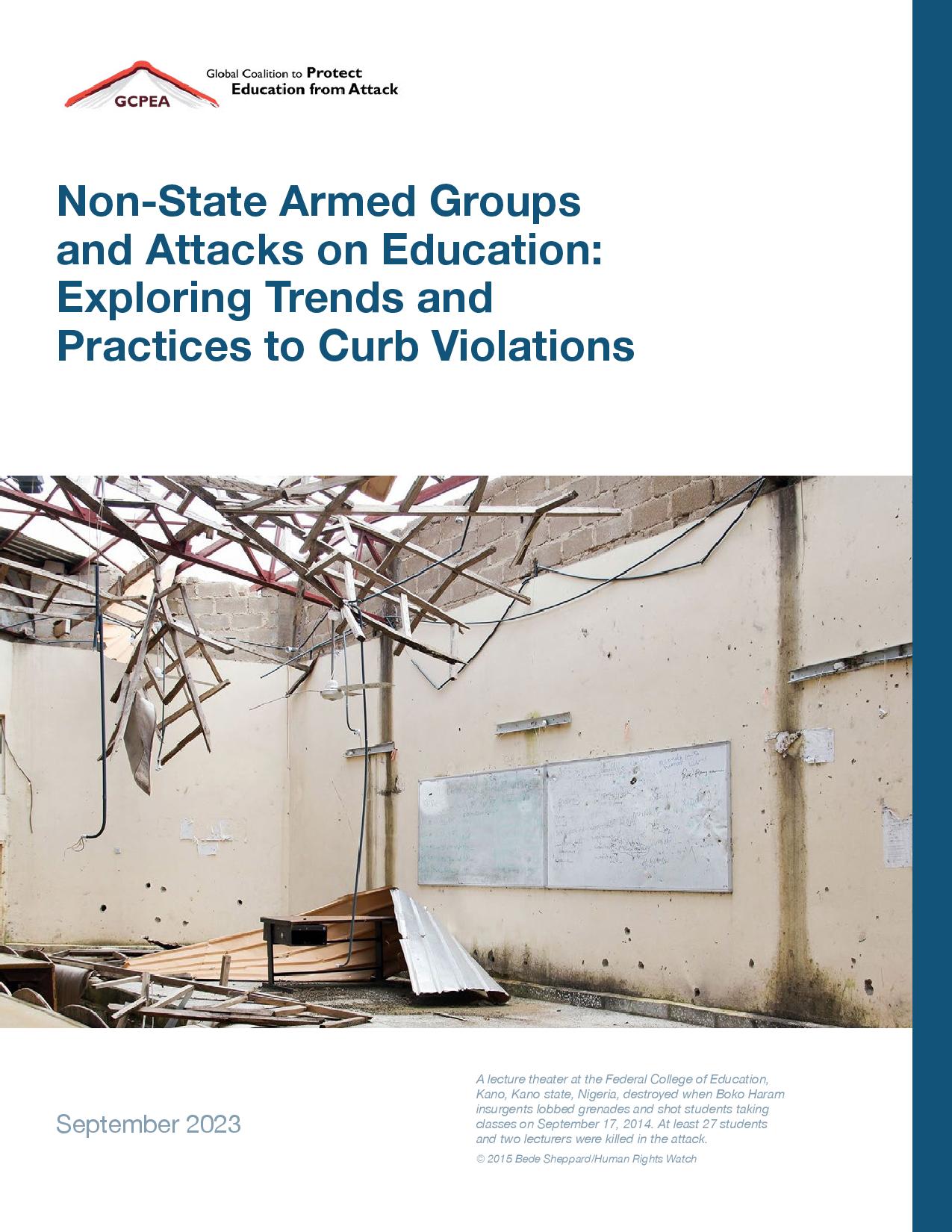GCPEA News
Protecting Education Newsletter – October 2014
GCPEA, October 22, 2014
Read the full October 2014 newsletter online.
Message from the Director
The selection of Malala Yousafzai and Kailash Satyarthi for the Nobel Peace Prize this month sends a strong message of hope and encouragement to students and teachers in war-torn communities who risk their lives for the sake of learning. Teenager Yousafzai is an ardent global advocate for education who was shot in the head by the Pakistani Taliban in October 2012 for defending girls’ schooling. Satyarthi has dedicated decades to rescuing children from hazardous labor conditions, freeing them to pursue what should be their primary occupation — education.
The Nobel announcement is especially timely. As classrooms opened for another season of learning this year, far too many students and teachers in conflict-affected areas returned to school filled with dread and fear of possible attack, instead of anticipation and excitement for the coming term. Others did not return to class at all because their school or university was closed due to threats of violence or destroyed as a deliberate tactic of war.
On October 1st, schools in three distinct regions of the globe came under attack in one day alone. In Syria, where at least 3,645 schools have been destroyed or damaged since the conflict began, car bombs exploded outside of Akrama al-Makhzoumi elementary school just as children were leaving for the day. Condemned as a “new low” by the UN, the attack killed 41 children according to some reports and sparked protests in Homs. In Peshawar, Pakistan, a hand grenade hurled at Askari Public School and College injured two children and killed a school teacher. And in eastern Ukraine, shells hit a playground on the first day of classes at School No. 57 in Donetsk; a teacher and the parent of a student were among those killed.
This day of violence was just one in a year that has seen many days of brutal attacks on education, the most highly publicized example being the mass abduction by Boko Haram of girls from their school in Borno state, Nigeria in April. More than six months later, the nightmare has still not ended for the missing girls of Chibok or their families.
Against this backdrop, the Global Coalition to Protect Education from Attack (GCPEA) has continued its work to highlight the incidence and impact of attacks on education, improve monitoring and reporting of attacks, promote effective programs and policies to protect education from attack, and strengthen accountability. In February, GCPEA released Education under Attack 2014, a global survey that found attacks on education to be far more widespread than reported previously, with a significant pattern of attacks occurring in 30 countries between 2009 and early 2013.
More recently, GCPEA released two publications that analyze programs and policies implemented around the world to protect education in conflict. The first underlines how international organizations can tap into local resources and knowledge to prevent and respond to attacks. The second documents attacks on teachers and the strategies employed to protect them.
In a significant milestone toward ending the use of schools for military purposes—a risk factor for attacks and a serious impediment to learning more generally—in June the Norwegian government committed toleading the process to endorse and implement the draft Lucens Guidelines for Protecting Schools and Universities from Military Use during Armed Conflict. The Guidelines urge warring parties to refrain from using education facilities for military means, including as bases, barracks, weapons caches, or detention centers. To date, 29 countries have voiced their support for the Guidelines publically. To help militaries and non-state armed groups better understand and implement the Guidelines, GCPEA has released aQ&A on the Guidelines and what they aim to achieve.
Moreover, on September 24th, GCPEA joined over 30 organizations participating in CHARGE — the Collaborative for Harnessing Ambition and Resources for Girls Education — led by Hillary Clinton and Julia Gillard and announced at the 10th Annual Meeting of the Clinton Global Initiative in New York City. At the event, GCPEA committed to providing technical support to states to incorporate the Lucens Guidelines into national policies and military doctrine, contributing to making schools safer for girls, one of CHARGE’s five key priorities.
While there has been some progress in protecting education in conflict, so far this year, as in previous years, the education experience for thousands of students has been one of terror and destruction, with learning spaces converted into military targets and back-to-school excitement transformed into grief and despair. Unless schools, students, and teachers are protected from violent attack and perpetrators are held to account, a generation of children living through conflict will miss out on the joy of learning and the long-term benefits of education.
In granting their award, the Nobel Committee explained: “It is a prerequisite for peaceful global development that the rights of children and young people be respected. In conflict-ridden areas in particular, the violation of children leads to the continuation of violence from generation to generation.” Governments, militaries, and non-state armed groups should heed this warning and take every precaution to ensure that schools are safe spaces for learning and that the right to education is protected for all students at all times.
[[{“type”:”media”,”view_mode”:”media_large”,”fid”:”880″,”attributes”:{“class”:”media-image”,”height”:”100px”,”width”:”100px”}}]]
Thank you for your continued support and efforts toward attaining this vision.
Best wishes,
Diya Nijhowne
Director, Global Coalition to Protect Education from Attack



